Exchanges Of Identity In Deep Space

Exchanges of identity in deep space
By reproducing the complexity of the cosmos through unprecedented simulations, a new study highlights the importance of the possible behaviour of very high energy photons
Like in a nail-biting thriller full of escapes and subterfuge, photons from far-off light sources, such as blazars, could go up against a continuous exchange of identity in their journey through the Universe. This is an operation that would allow these very tiny particles of light to escape an enemy which, if encountered, would annihilate them. This is the phenomenon studied by a group of researchers from the University of Salento, Bari, the National Institute for Nuclear Physics (INFN), the National Institute for Astrophysics (INAF) and SISSA thanks to brand new simulation models that reproduce the complexity of the cosmos as never before. Normally, very high energy photons (gamma rays) should “collide” with the background light emitted by galaxies transformed into pairs of matter and antimatter particles, as envisaged by the Theory of Relativity. For this reason, the sources of very high energy gamma rays should appear significantly less bright than what is observed in many cases.
A possible explanation for this surprising anomaly is that light photons are transformed into hypothetical weakly-interacting particles, “axions” which, in turn, would change into photons, all due to the interaction with magnetic fields. With these metamorphoses, a part of the photons would escape interaction with the intergalactic background light that would make them disappear. The importance of this process is emphasised by the study published on Physical Review Letters, which re-created an extremely refined model of the Cosmic Web, a network of filaments composed of gas and dark matter present throughout the Universe and of its magnetic fields. The aforementioned effects are now awaiting comparison with those obtained experimentally through Cherenkov Telescope Array new generation telescopes.
In this research, through complex and unprecedented computer simulations made at the CSCS Supercomputing Centre in Lugano, scholars have reproduced the so-called Cosmic Web and the magnetic fields associated with this to investigate the possibility, advanced from previous theories, that photons from a light source are transformed into axions, hypothetical elementary particles, on interacting with an extragalactic magnetic field. Axions could then be retransformed into photons by interacting with other magnetic fields. Researchers Daniele Montanino, Franco Vazza, Alessandro Mirizzi and Matteo Viel explain: “Photons from luminous bodies disappear when they encounter extragalactic background light (EBL). But if on their journey they head into these transformations as envisaged by these theories, it would explain why, in addition to giving very important information on processes that occur in the universe, distant celestial bodies are brighter than expected from an observation on Earth. These changes would, in fact, enable a greater number of photons to reach the Earth”.
In the simulations made by scientists, thanks to the wealth of magnetic fields present in the Cosmic Web’s filaments recreated with the simulations, the conversion phenomenon would seem much more relevant than predicted by previous models: “Our simulations reproduce a very realistic picture of the cosmos’ structure. From what we have observed, the distribution of the Cosmic Web envisaged by us would markedly increase the probability of these transformations”. The next step in the research? To compare simulation results with the experimental data obtained through the use of the Cherenkov Telescope Array Observatories detectors, the new-generation astronomical observatories, one of which is positioned in the Canary Islands and the other in Chile, that will study the Universe through very high energy gamma rays.
IMAGE….Through complex computer simulations, researchers have reproduced the so-colled Comsc Web and its magnetic fields Credit Vazza F., Bruggen M. Gheller, C., Wang P.
More Posts from Hannahhaifisch and Others

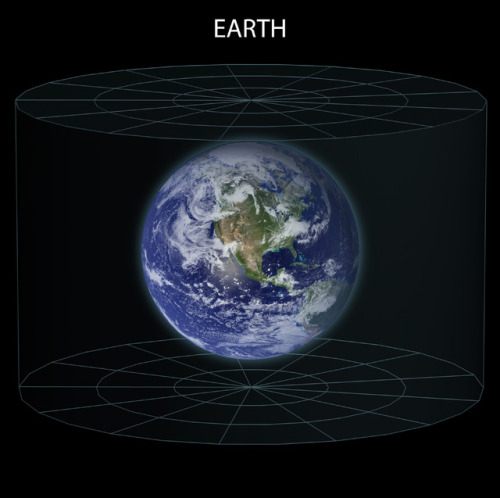
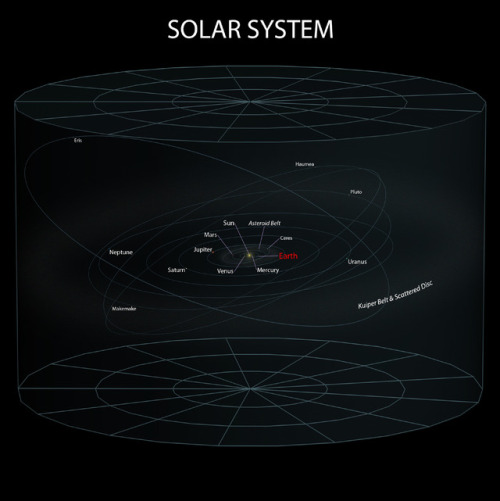
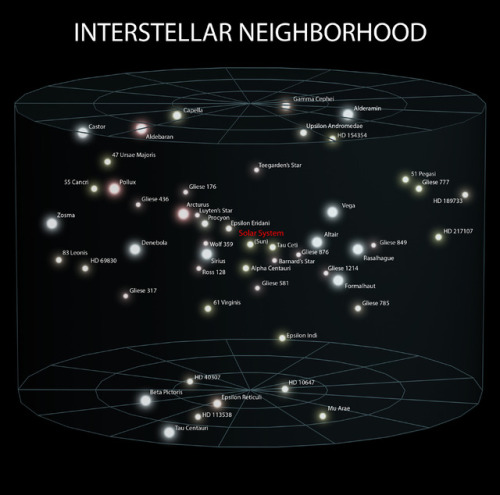

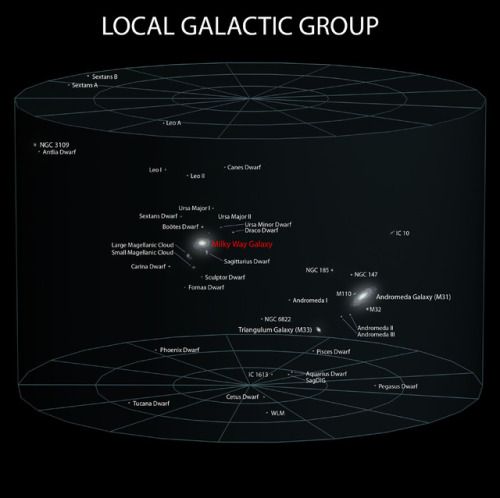
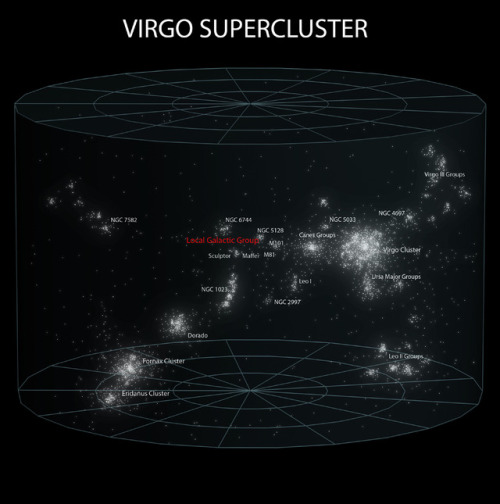
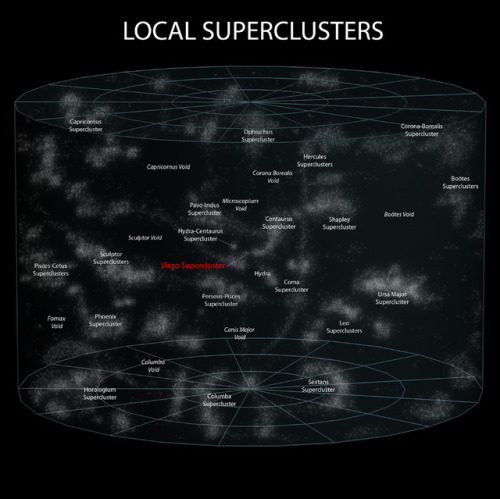
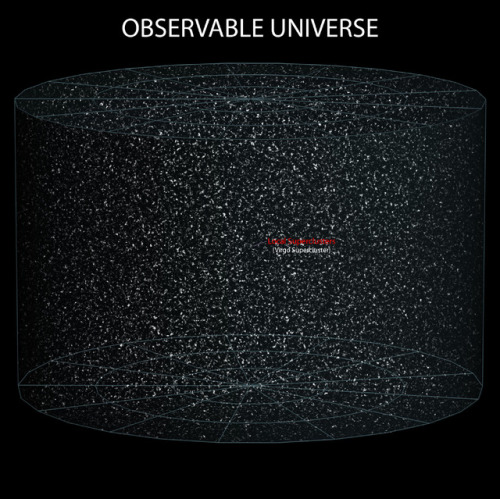
~ wikimedia commons

LIGO scientists detected a third gravitational wave from two colliding black holes.
This week, scientists using the Laser Interferometer Gravitational-Wave Observatory, or LIGO, announced that they had detected another gravitational wave—the third ripple observed since September 2015. The findings were published in the journal Physical Review Letters.
The source of this most recent gravitational wave is a black hole 49 times larger than our sun that was formed by two colliding black holes located 3 billion light-years away. The data indicates that the spin of one or both of the black holes may have a tilted orbit, which can reveal clues to their origins. Theoretical astrophysicist Priyamvada Natarajan explains how this finding sheds light on black hole formation, and how it affects our understanding of general relativity and dark matter. Listen here.
[Image credit: LIGO/Caltech/MIT/Sonoma State (Aurore Simonnet)]
https://player.vimeo.com/video/129003674
Hannah Reber, "Fragezeichen V4", 2015, part of multiple-screen video installation

Orion
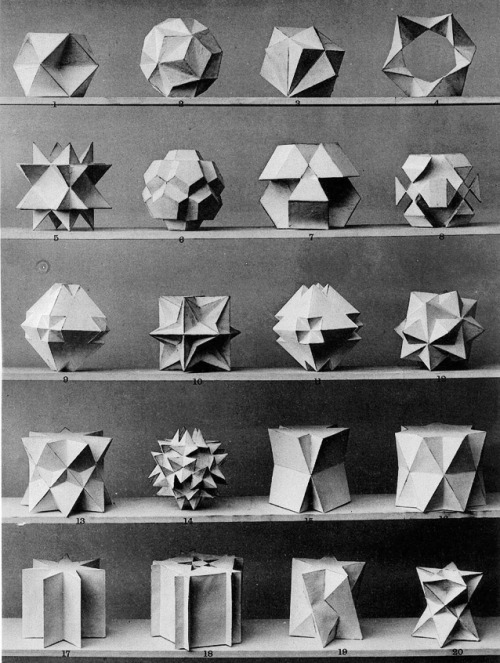
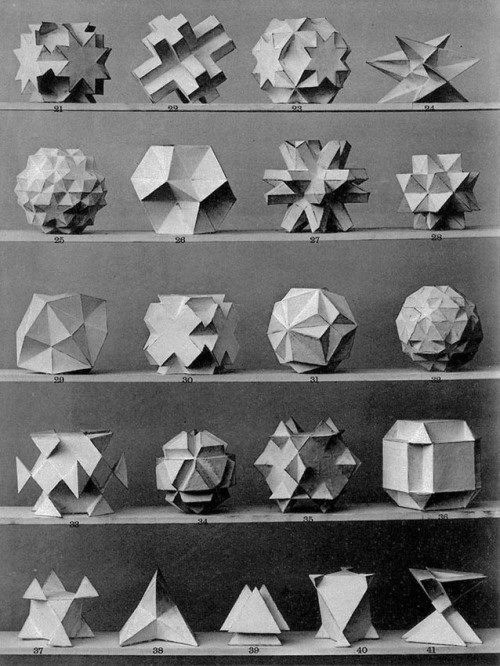
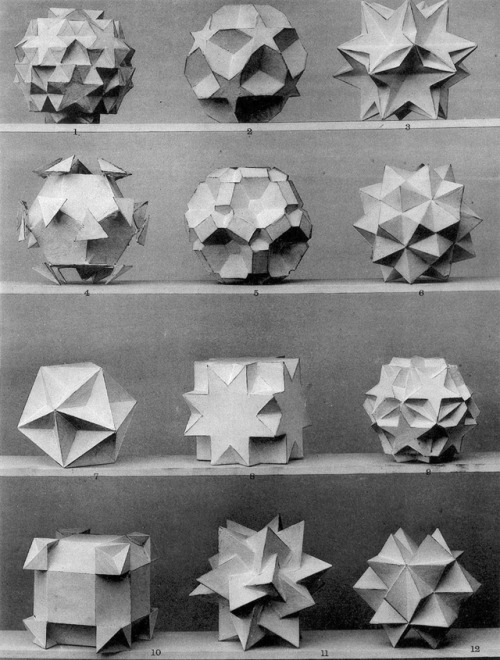
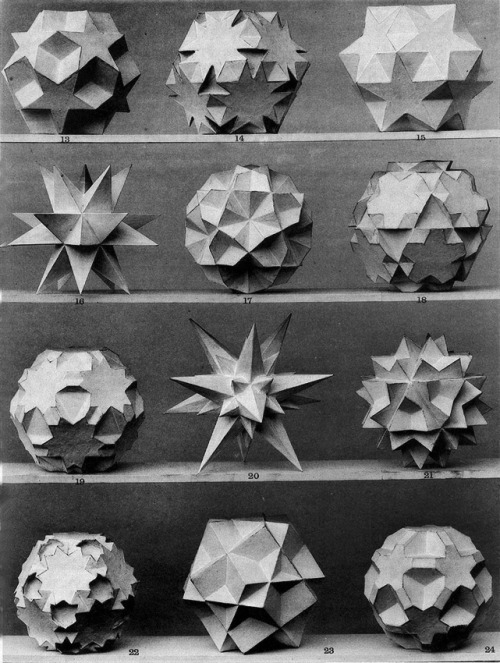
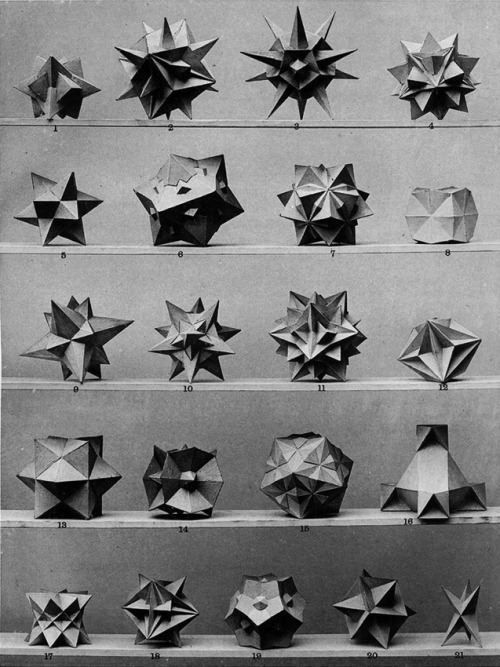




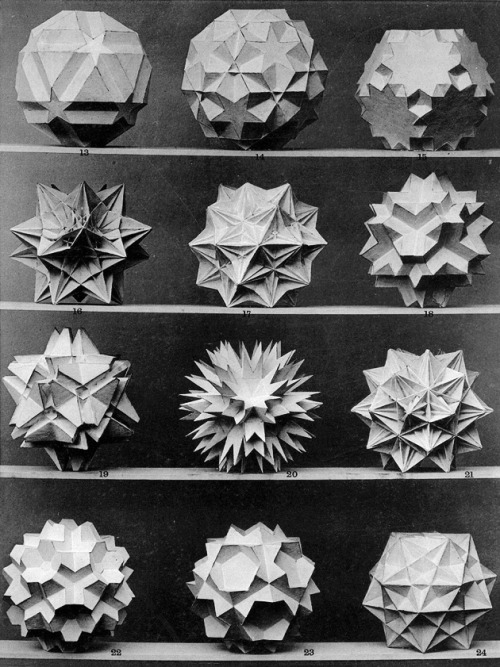
Max Brückner, from his book Vielecke und Vielfläche, 1900. Leipzig, Germany. Via Bulatov.
Brückner extended the stellation theory beyond regular forms, and identified ten stellations of the icosahedron, including the complete stellation. wiki




How spheres impact water has been studied for more than a century. The typical impact for a rigid sphere creates a cavity like the one on the upper left - relatively narrow and prone to pinching off at its skinny waist. If the sphere is elastic –squishy – instead, the cavity ends up looking much different. This is shown in the upper right image, taken with an elastic ball and otherwise identical conditions to the upper left image. The elastic ball deforms; it flattens as it hits the surface, creating a wider cavity. If you watch the animations in the bottom row, you can see the sphere oscillating after impact. Those changes in shape form a second cavity inside the first one. It’s this smaller second cavity that pinches off and sends a liquid jet back up to the collapsing splash curtain.
From the top image, we can also see that the elastic sphere slows down more quickly after impact. This makes sense because part of its kinetic energy at impact has gone into the sphere’s shape changes and their interaction with the surrounding water.
If you’d like to see more splashy stuff, be sure to check out my webcast with a couple of this paper’s authors. (Image credits: top row - C. Mabey; bottom row - R. Hurd et al., source; research credit: R. Hurd et al.)

A new study publishing this week in the Astrophysical Journal by Gary Prézeau of NASA’s Jet Propulsion Laboratory, Pasadena, California, proposes the existence of long filaments of dark matter, or “hairs.” http://ift.tt/1NdQIKk

A method to engineer crystals with a large fraction of reactive facets
Versatile superstructures composed of nanoparticles have recently been prepared using various disassembly methods. However, little information is known on how the structural disassembly influences the catalytic performance of the materials. Scientia Professor Rose Amal, Vice-Chancellor’s Research Fellow Hamid Arandiyan and a group from the Particles and Catalysis Research Group from the University of New South Wales (UNSW) School of Chemical Engineering have had their research address this issue published in Nature Communications.
The research team led by Dr Jason Scott and Prof Sean Smith in collaboration with Curtin University and Beijing University of Technology has developed a method that allows them to engineer crystals with a large fraction of reactive facets. An ordered mesostructured La0.6Sr0.4MnO3 (LSMO) perovskite catalyst was disassembled using a unique fragmentation strategy, whereby the newly-exposed (001) reactive faces at each fracture were more reactive towards methane oxidation than the regular (i.e. before disassembly)
It is of significant interest to use methane as an alternative fuel to coal and oil due to its high hydrogen to carbon ratio which provides comparatively lower greenhouse gas emissions. Commercial catalysts for methane combustion contain precious metals (e.g. Pt and Pd) which are of high cost and poor thermal stability (caused by agglomeration of the metal deposits). Using perovskite-type catalysts to replace noble metal supported catalysts for methane oxidation has attracted recent attention due to their excellent thermal stability. In their recently published article, the research team describes a simple fragmentation method to synthesise a novel three-dimensional hexapod mesostructured LSMO perovskite.
Read more.

Counting the stars in the universe is like trying to count the number of sand grains on a beach, it’s not possible. Although estimates vary among different experts, the general consensus is that there are at least between 100 billion and 200 billion galaxies in our universe. Think about that for a moment, and now throw in billions of stars in each galaxy! (source) This number could very easily be in the trillions for all we know.
A team of scientists gathered data on more than 8000 galaxies that surround the one we live in, also mentioned above, the Milky Way galaxy. They mapped each galaxies movement and position in space and discovered that the Milky Way galaxy is part of one giant system that contains a number of other galaxies, referred to as a supercluster.
-
 longlivejolif-blog liked this · 7 years ago
longlivejolif-blog liked this · 7 years ago -
 chenhe8216 liked this · 7 years ago
chenhe8216 liked this · 7 years ago -
 starsaremymuse reblogged this · 7 years ago
starsaremymuse reblogged this · 7 years ago -
 lensel liked this · 7 years ago
lensel liked this · 7 years ago -
 ziraelcosplay liked this · 7 years ago
ziraelcosplay liked this · 7 years ago -
 deathly-euphoric reblogged this · 7 years ago
deathly-euphoric reblogged this · 7 years ago -
 sundayecstasy liked this · 7 years ago
sundayecstasy liked this · 7 years ago -
 the-telescope-times liked this · 7 years ago
the-telescope-times liked this · 7 years ago -
 hannahhaifisch reblogged this · 7 years ago
hannahhaifisch reblogged this · 7 years ago -
 hannahhaifisch liked this · 7 years ago
hannahhaifisch liked this · 7 years ago -
 rfrank2248 liked this · 7 years ago
rfrank2248 liked this · 7 years ago -
 aleesyvon reblogged this · 7 years ago
aleesyvon reblogged this · 7 years ago -
 vertikar liked this · 7 years ago
vertikar liked this · 7 years ago -
 cosmiclon liked this · 7 years ago
cosmiclon liked this · 7 years ago -
 spacetimewithstuartgary reblogged this · 7 years ago
spacetimewithstuartgary reblogged this · 7 years ago